The basic anatomical features of the knee include the femur, tibia, patella, and the fibula (Figure 1). The knee joint is the largest joint in the human body. The function of the knee joint is to allow movement of the leg and is critical to normal walking. The popliteal artery is a continuation of the femoral artery. This artery supplies blood to the knee joint through numerous small branches.

Inside the knee there will be smooth articular cartilage that covers the joint surface (Figure 2). Resting on top of the tibial cartilage is the meniscus, which improves stability of the joint and helps distribute weight.
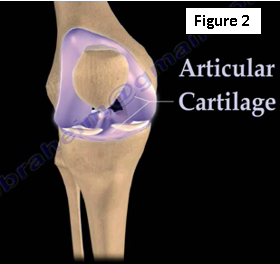
The anterior cruciate and posterior cruciate ligaments are important ligaments that control the forward and backward motions of the knee joint (Figure 3).
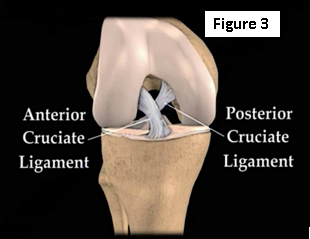
The quadriceps tendon and the patellar tendon are thick fibrous tissues important to the extensor mechanism of the knee. The lateral collateral and the medial collateral ligaments are important in controlling excessive motion by limiting joint mobility, especially side-to-side movement (Figure 4). Together these tendons and ligaments permit flexion and extension, as well as slight lateral and medial rotation of the knee joint.
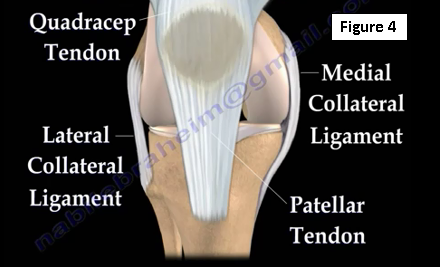
The quadriceps muscles play a vital role in the stability of the knee and are anchored onto the top of the patella. The patellar tendon acts as a downward continuation of the quadriceps tendon originating from the bottom of the patella and inserting into the tibial tuberosity. Normal active extension of the leg is dependent upon both the quadriceps and patellar tendon remaining intact. Disruption of the quadriceps tendon will leave the patient unable to actively extend the knee (Figure 5). The same result occurs with the disruption of the patellar tendon.

When the anterior cruciate ligament is ruptured, anterior translation of the tibia in relationship to the femur will occur (Figure 6). The most common causes of ACL ruptures are due to traumatic force being applied during twisting motion and sidestepping or landing from a jump. The patient will often complain of immediate pain, the knee giving way, and swelling of the knee. If an aspiration of the knee joint shows evidence of blood within the joint, there is a 75% to 80% chance of ACL and meniscus injury.

The Lachman’s test is the best examination to diagnose an ACL tear (Figure 7). The knee is flexed at 30 degrees. An ACL tear of the knee is identified by pulling on the tibia and examining the frontward motion of the lower leg in comparison to the upper leg.
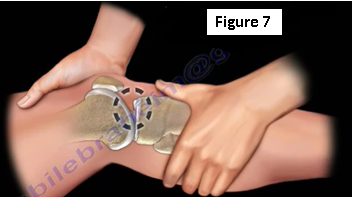
Radiological examinations will often show the presence of bone bruising associated with pairs of the ACL (Figure 8). These injuries are typically located at the middle of the femoral condyle and on the posterior part of the tibia laterally.
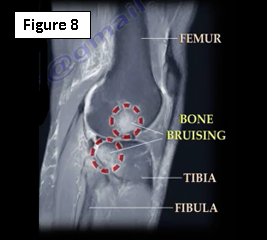
When the posterior cruciate ligament ruptures, posterior translation of the tibia will occur (Figure 9). A common cause of this injury is a bent knee hitting a dashboard in a car accident.
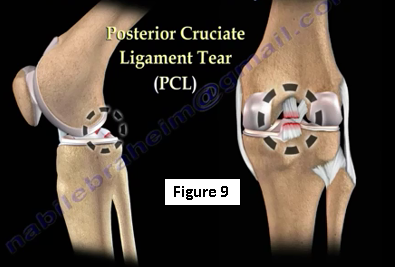
The tibial sag test is used to assess a tear of the posterior cruciate ligament (Figure 10). Both knees are flexed at 90 degrees and the knees are viewed from the side to compare the positions of the anterior tibia.
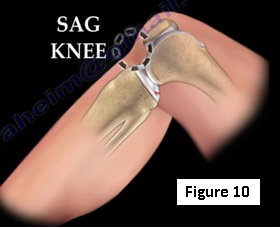
The quadriceps active test is performed with the patient’s knee flexed to 90 degrees. The examiner stabilizes the leg and has the patient actively contract the quadriceps muscle (Figure 11). The tibia is seen being actively reduced from the posterior subluxed position.
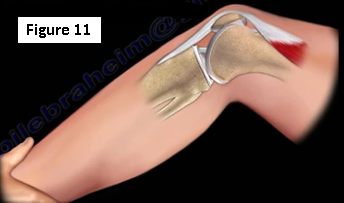
The Lachman’s test is also used to identify injuries of the posterior cruciate ligament (Figure 12). The examiner will provide posterior force to the tibia while applying anterior pressure to the femur, in order to assess the posterior translation of the tibia.
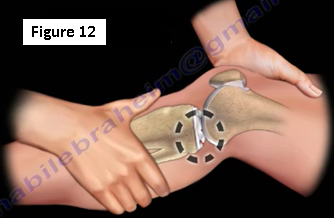
The posterior drawer test is carried out with the patient in the supine position and the knee flexed to 90 degrees (Figure 13). The examiner applies posterior pressure to the tibia and the test is considered positive if excessive posterior translation of the tibia is shown.
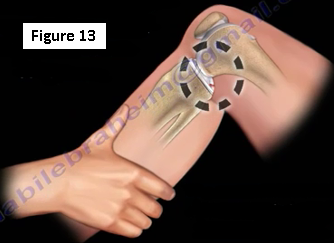
The dial test is performed while the patient is in either the supine or prone position and both knees are in 90 and 30 degrees of flexion. An external rotational force is then applied to both of the feet (Figure 14). The amount of external rotation to each lower extremity is then measured at both angles. Flexion at the 90 degree position will test the posterior cruciate ligament more than ten degrees. The difference between the normal and injured extremity indicates a significant injury. Finally, testing of the injured extremity in 30 degrees of flexion is done to determine injury to the posterolateral corner.
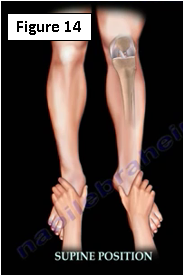
The lateral collateral ligament supports the knee on the outside of the joint. This ligament is usually injured by the pressure placed on the knee joint from the inside which results in stress placed on the outside of the joint. The medial collateral ligament is usually injured when the outside of the knee joint is struck (Figure 15). This causes the outside of the joint to buckle and inside to widen. Isolated injuries to either of these ligaments are tested with the knees in approximately twenty to thirty degrees of flexion.
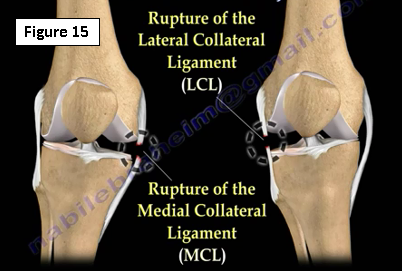
A meniscal tear is a common knee injury that can cause pain within the knee joint. Each knee have two C-shaped menisci; the medial meniscus and the lateral meniscus (Figure 16). This tissue functions as cushion for the articular cartilage. The majority of the meniscus lacks a blood supply. For this reason, some areas of the meniscus are unable to undergo a normal healing process. The peripheral area is the portion of the meniscus that does have a blood supply. If damage occurs within this area, it is possible to repair the torn meniscus. Symptoms of meniscal tears include knee pain, pain when straightening the knee, locking of the knee joint and weakness.
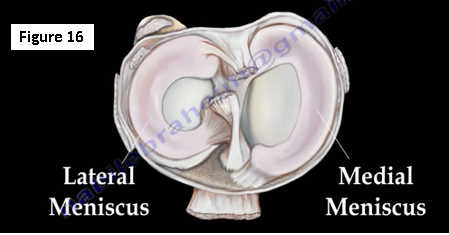
Two commons types of meniscal tears include peripheral and bucket handle tears (Figure 17). Peripheral tears occur in the vascular zone and will usually heal if repaired. Bucket handle tears generally involve a large portion of the meniscus displaced into the joint which is usually debrided. Meniscal tears are extremely common injuries. With proper diagnosis, treatment and rehabilitation, patients often return to their pre-injury abilities.
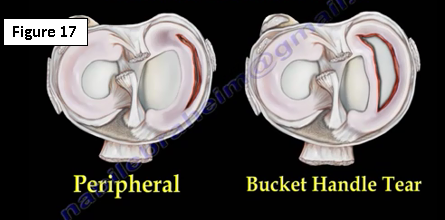
For more information on knee pain, follow the links below:
For more information, visit my YouTube Channel:
